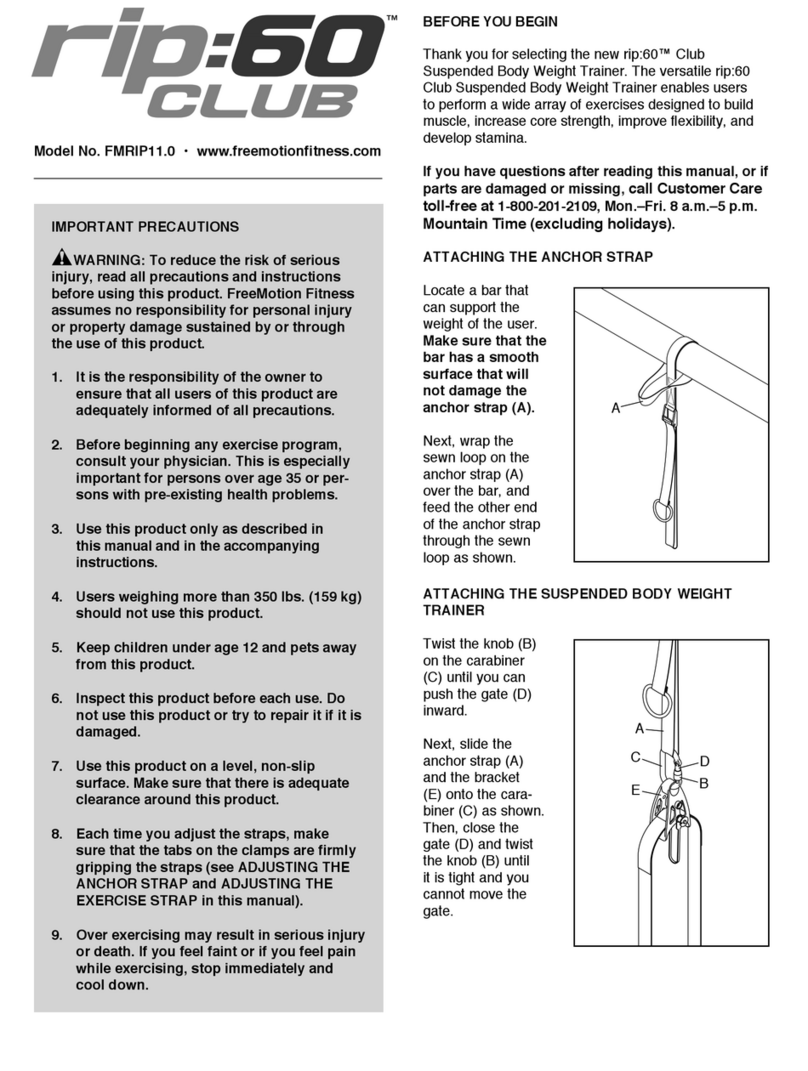3
WARNING: To reduce the risk of serious injury, read all important precautions and
instructions in this manual and all warnings on your weight bench before using your weight bench.
ICON assumes no responsibility for personal injury or property damage sustained by or through the
use of the weight bench.
IMPORTANT PRECAUTIONS
1. Before beginning any exercise program, con-
sult your physician. This is especially impor-
tant for persons over the age of 35 or per-
sons with pre-existing health problems.
2. Use the weight bench only as described in
this manual.
3. It is the responsibility of the owner to ensure
that all users of the weight bench are ade-
quately informed of all precautions.
4. The weight bench is intended for home use
only. Do not use the weight bench in a com-
mercial, rental, or institutional setting.
5.
eep the weight
bench
indoors, away from
moisture and dust. Place the weight
bench
on a level surface, with a mat beneath it to
protect the floor or carpet. Make sure that
there is enough clearance around the weight
bench
to mount, dismount, and use it.
6. eep children under age 12 and pets away
from the weight bench at all times.
7.
Inspect and properly tighten all parts regular-
ly. Replace any worn parts immediately.
8. Make sure that the pins and knobs are fully
engaged before the weight bench is used.
9.
Wear appropriate clothes while exercising.
Always wear athletic shoes for foot protec-
tion while exercising.
10.
The weight bench is designed to support a
maximum user weight of 300 lbs. (136 kg)
and a maximum total weight of 610 lbs. (277
kg). Do not place more than 310 lbs. (141 kg)
on the barbell carriages. Do not place more
than 310 lbs. (141 kg), including a barbell, on
the weight rests. Do not place more than 150
lbs. (68 kg) on the leg lever. Do not place
more than 150 lbs. (68 kg) on the weight car-
riage. Note: The weight bench does not
include weights.
11. Make sure that the cables remain on the pul-
leys at all times. If the cables bind as you are
exercising, stop immediately and make sure
that the cables are on the pulleys. Replace all
cables at least every two years.
12. Always set all the weight rests and safety
spotters at the same height.
13. Always place an equal amount of weight on
each side of the weight carriage or barbell.
14.
Always exercise with a partner. Your partner
should be ready to catch the barbell if you
cannot complete a repetition.
15. Always disconnect the row bar when per-
forming an exercise that does not require the
row bar.
16.
If you feel pain or dizziness while exercising,
stop immediately and cool down.




























